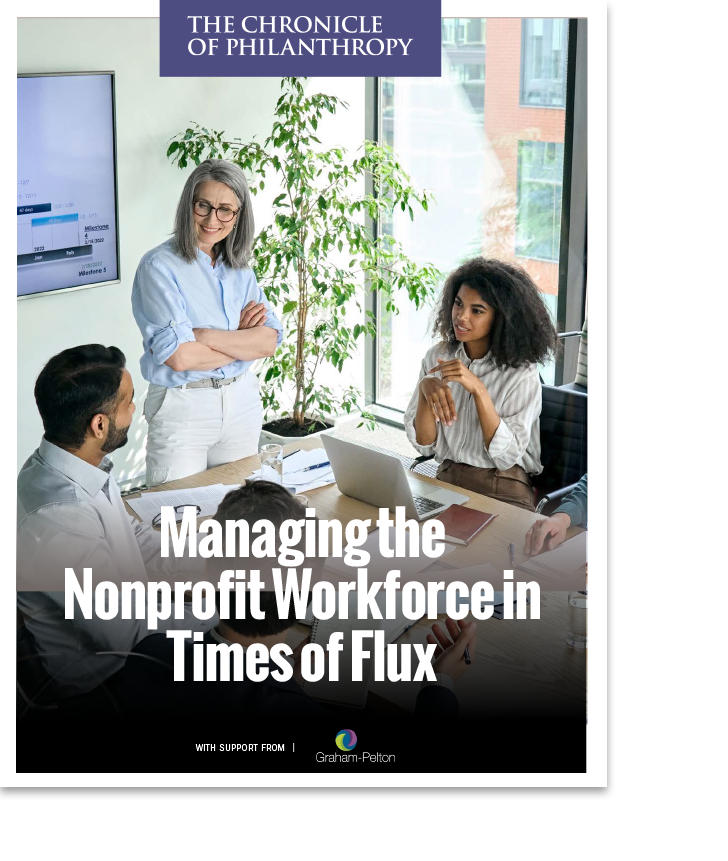

Times are changing—quickly. And nowhere is this more evident than in the workplace. The Great Resignation, the Big Quit, or the Great Reshuffle, whatever the name—employees are quitting, moving, or reassessing the future of work.
Companies are learning how to adapt outside of traditional office space in order to compete or survive, and organizations are reconsidering their approach to accommodating the needs of young nonprofit workers.
These are just a few of the issues that arise as nonprofit executives contemplate how to manage their employees in an ever-changing environment.
To survive and thrive, it is crucial that leaders look for insight on how to adjust to attract and keep the best employees.
The Chronicle has compiled “Managing the Nonprofit Workforce in Times of Flux” to answer questions on how to move forward in your nonprofit workplace. Download the Article Collection today.
Companies are learning how to adapt outside of traditional office space in order to compete or survive, and organizations are reconsidering their approach to accommodating the needs of young nonprofit workers.
These are just a few of the issues that arise as nonprofit executives contemplate how to manage their employees in an ever-changing environment.
To survive and thrive, it is crucial that leaders look for insight on how to adjust to attract and keep the best employees.
The Chronicle has compiled “Managing the Nonprofit Workforce in Times of Flux” to answer questions on how to move forward in your nonprofit workplace. Download the Article Collection today.
By submitting this form, I agree to share the information above with The Chronicle of Philanthropy and Graham Pelton for marketing purposes.
.
.
Times are changing—quickly. And nowhere is this more evident than in the workplace. The Great Resignation, the Big Quit, or the Great Reshuffle, whatever the name—employees are quitting, moving, or reassessing the future of work.
Companies are learning how to adapt outside of traditional office space in order to compete or survive, and organizations are reconsidering their approach to accommodating the needs of young nonprofit workers.
These are just a few of the issues that arise as nonprofit executives contemplate how to manage their employees in an ever-changing environment.
To survive and thrive, it is crucial that leaders look for insight on how to adjust to attract and keep the best employees.
The Chronicle has compiled “Managing the Nonprofit Workforce in Times of Flux” to answer questions on how to move forward in your nonprofit workplace. Download the Article Collection today.
Companies are learning how to adapt outside of traditional office space in order to compete or survive, and organizations are reconsidering their approach to accommodating the needs of young nonprofit workers.
These are just a few of the issues that arise as nonprofit executives contemplate how to manage their employees in an ever-changing environment.
To survive and thrive, it is crucial that leaders look for insight on how to adjust to attract and keep the best employees.
The Chronicle has compiled “Managing the Nonprofit Workforce in Times of Flux” to answer questions on how to move forward in your nonprofit workplace. Download the Article Collection today.


© The Chronicle of Philanthropy 2022
